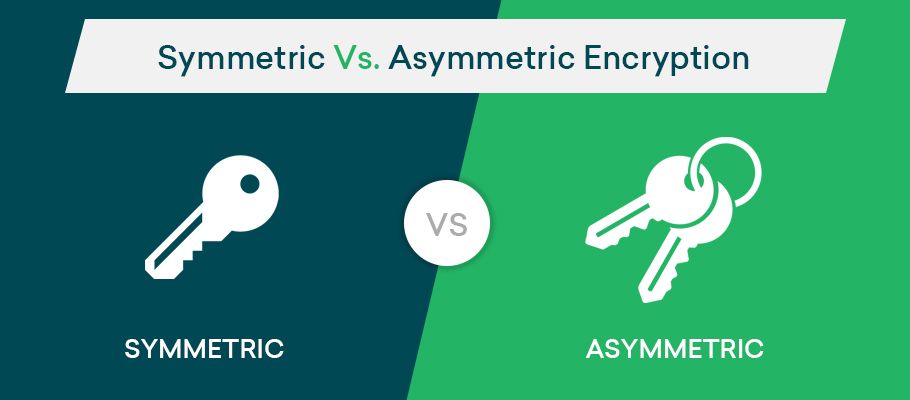Mastering Software Engineering: Diagrams, Models, and Testing Techniques
Symmetric vs Asymmetric Encryption

Introduction
In today's cyber environment, there is always a risk of unauthorized access to all forms of data. The information that can disclose customers' and clients' personally identifiable data or credit card records is found in payment and financial system data, which is particularly sensitive. For businesses that process payments every second of the day, encryption is essential for protecting personally identifiable data and reducing risks. As a result, cryptography is essential. Asymmetric and symmetric cryptography are the two primary categories. In this article, we'll look more closely at these two.
Symmetric Cryptography
- A secret key is used for both encryption and decryption in symmetric key cryptography, also known as symmetric encryption.
- This strategy employs two keys—one to encrypt data and another to decode it—and is the opposite of asymmetric encryption.
- During this stage, the data is converted into a format that cannot be read or examined by anybody who does not possess the secret key that was used to encrypt it. The effectiveness of this technique depends on the quality of the random number generator used to create the secret key.
- The two types of algorithms that make up the widely utilized symmetric key cryptography on the Internet nowadays are block and stream.
- Two popular encryption algorithms are:
- Advanced Encryption Standards (AES)
- Data Encryption Standard (DES).
- Although this form of encryption is often significantly quicker than asymmetric encryption, it allows both the sender and the recipient of the material to possess the secret key.
- Symmetric cryptography relies on a single shared key that may be used to encrypt and decode data and is known to all parties. Other names for symmetric-key cryptography include secret-key, one-key, shared-key, and private-key encryption.
Applications of Symmetrical Cryptography
Symmetric encryption is frequently used for bulk encryption, encrypting enormous amounts of data, such as database encryption, since it operates more smoothly and quickly than asymmetric encryption. Only the database itself may encrypt or decrypt data in a database using the secret key.
- To prevent identity theft and fraudulent charges, personally identifiable information should be protected when used in payment applications such as bank transactions.
- Validations are done to make sure the message's sender is who he claims to be.
- Generating random numbers or hashing
Asymmetric Cryptography
- A communication is encrypted and decrypted using a pair of keys that are similar in asymmetric cryptography, sometimes referred to as public-key cryptography. In asymmetric key cryptography, the private key is stored by one public key and one private key in order to prevent unauthorized access or use.
- Anyone can encrypt a document using a public key so that only the intended recipient can decode it with their shared secret key. Only the key's creator is aware of a private key or secret key.
- The recipient's public key is retrieved from a shared directory and used to encrypt the communication before it is submitted whenever someone wants to send an encrypted message. The recipient will then use the linked private key to decode the message.
- However, if the sender encrypts the communication with their private key, only their public key may be used to decode it, proving their identity. There is no need for users to manually lock and unlock the message because these encryption and decryption processes are automated.
- Asymmetric cryptography is used by many protocols, notably the secure sockets layer (SSL) and transport layer security (TLS) protocols that enable HTTPS.
- In order to establish a reliable connection across a shaky network, such as the Internet, or to validate a digital signature, browsers frequently utilize encryption.
- Increased data security is asymmetric cryptography's main benefit. Users are never required to share or trade their private keys, so there are fewer chances of malicious behavior occurring on a user's private key while it is being sent.
- A communication, piece of software, or digital record can have its authenticity and reliability verified using a digital signature, which is a cryptographic method. It is the digital counterpart of a handwritten signature or a sealed seal.
- Asymmetric cryptography is frequently used when using digital signatures to verify the validity of data.
Applications of Asymmetric Cryptography:
- A public key is used to encrypt a file in encrypted email, while a private key is used to decrypt it.
- The SSL cryptographic protocols, which offer encrypted communications between websites and browsers, frequently employ asymmetric encryption.
- Cryptocurrencies employ asymmetric encryption when users supply public keys that will be used by everyone and private keys that are kept secret. A cryptographic technique is used by Bitcoin to ensure that only funds belonging to their legitimate owners may be spent.
Conclusion
Which one is therefore more safe when it comes to the distinction between symmetric and asymmetric encryption? Although slower than symmetric encryption, asymmetric encryption is more stable. Depending on the task, one or both of them may be employed; they are each strong in their own unique ways. So, we conclude this article. Hope this led you to a better understanding of the two critical cryptography keys.
